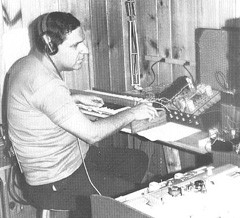Synthesizer’s pioneer on the South Shore
Herbert Deutsch, co-inventor of the Moog Synthesizer, has taught at Hofstra for 51 years.
First of two parts.
Unbeknown to many, one of the pioneers of modern music makes his living on the South Shore. Anyone who has studied music at Hofstra University would recognize him, as he has been teaching at the school for 51 years. His name is Herbert Deutsch, and he lives in Massapequa Park with his wife, Nancy. In 1964, at age 32, he co-invented the Moog synthesizer, helping to pave the way for electronic music.
On May 23, Internet users may have noticed an Internet-version synthesizer atop Google’s homepage. The “Google doodle” was playable, allowing users to click on the keys to create music. The significance of the date? It was the 78th birthday of Bob Moog, the man after whom the synthesizer is named. Although Moog, who died in 2005, spent his entire life modifying and improving the device, it was Deutsch with whom he invented the first prototype nearly 50 years ago.
The evolution of electronic music
Traditional instruments produce music through the vibration of a string or the vibration of air into a reed or horn, the Moog synthesizer produces sound electronically. Its various dials, buttons and keys allow a musician to manipulate the sound. The term “synthesize” literally means combining elements into one unifying entity.
Synthesizers had existed before, but were massive pieces of equipment. “It was nothing that you can pick up and carry,” said Deutsch, who is now 80.
Electronic music was also not new — but certainly not mainstream. The Theremin, invented by Russian physicist Leon Theremin in the 1920s, was among the first electronic instruments, played by moving the hands around two antennae — one controlling pitch and the other controlling volume. Deutsch, who bought an early model of the Theremin when he was young, said that the instrument had a major influence on him.
It wasn’t until 1968, four years after Deutsch and Moog finished the prototype of the synthesizer, that it had its first commercial breakthrough, when composer Wendy Carlos used it in a recording called “Switched-On Bach.” “All of a sudden, classical musical people all bought it,” Deutsch said. “That’s when the instrument really became big.”

 56.0°,
Overcast
56.0°,
Overcast 







